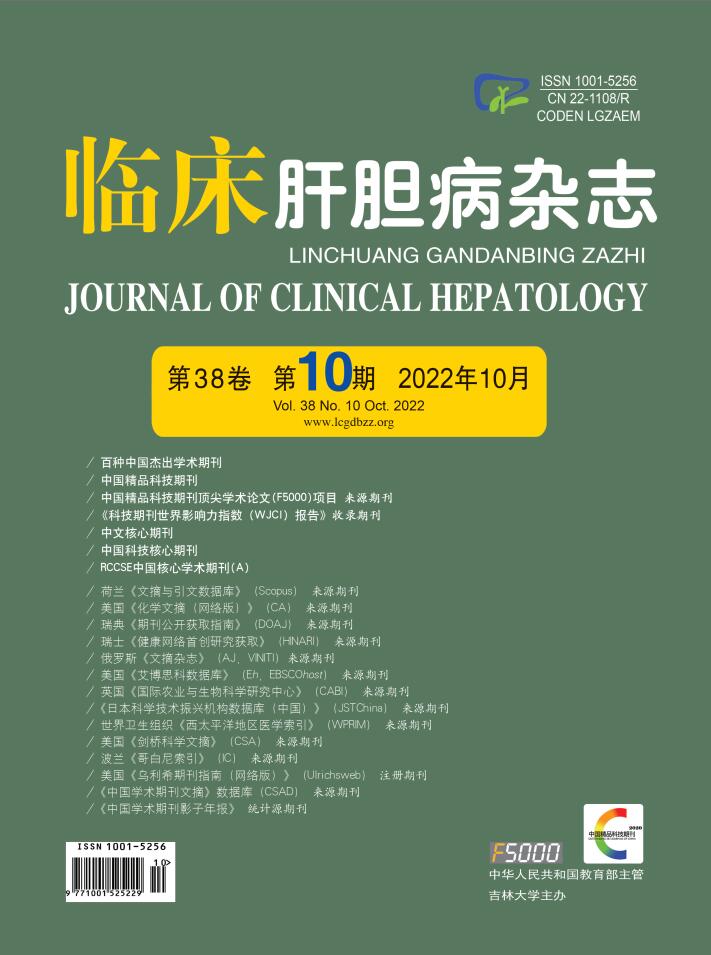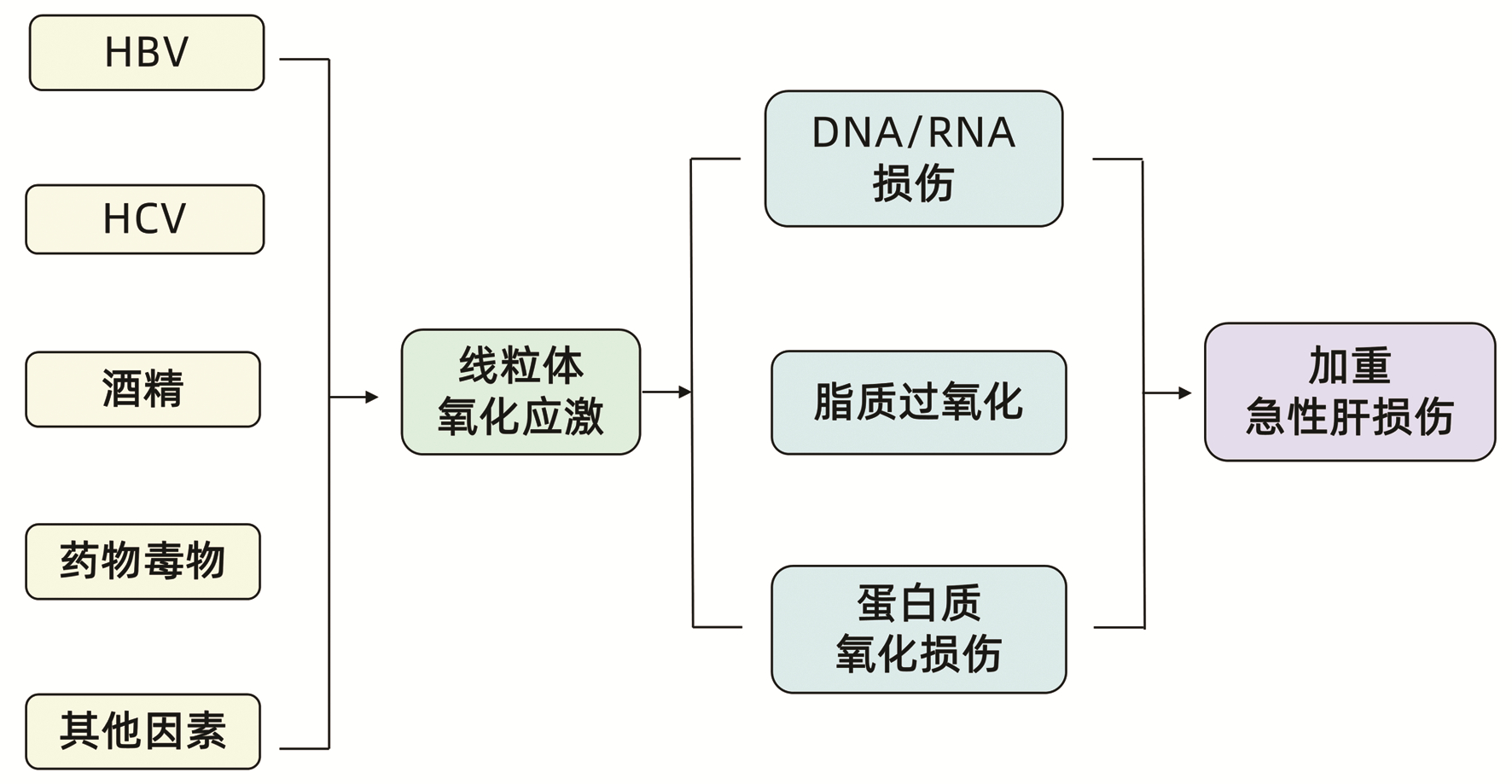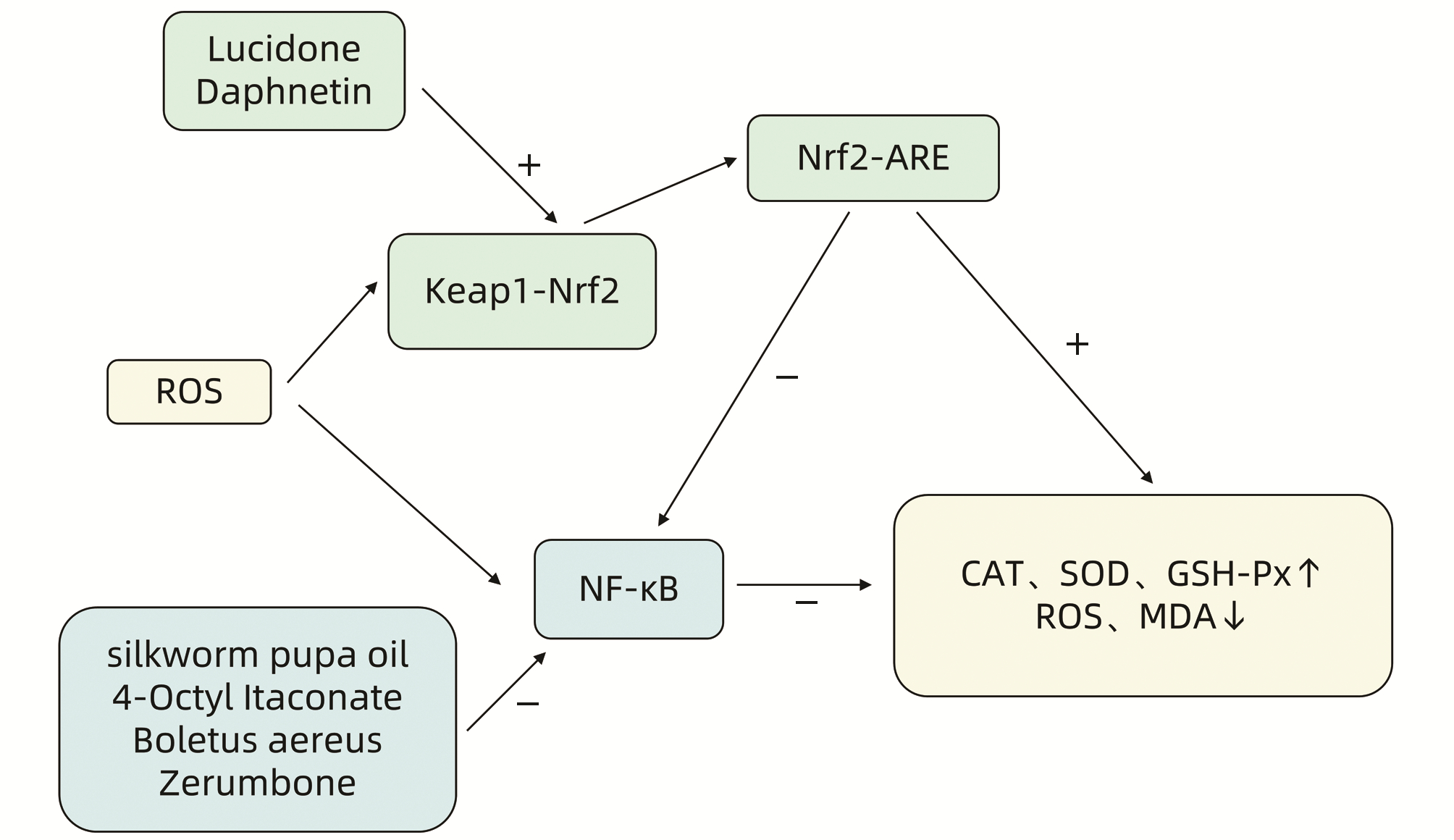| [1] |
SHRESTHA DB, BUDHATHOKI P, SEDHAI YR, et al., N-acetyl cysteine versus standard of care for non-acetaminophen induced acute liver injury: a systematic review and meta-analysis[J]. Ann Hepatol, 2021, 24: 100340. DOI: 10.1016/j.aohep.2021.100340. |
| [2] |
XU FL, XU JX, XIONG X, et al. Salidroside inhibits MAPK, NF-kappaB, and STAT3 pathways in psoriasis-associated oxidative stress via SIRT1 activation[J]. Redox Rep, 2019, 24(1): 70-74. DOI: 10.1080/13510002.2019.1658377. |
| [3] |
SEEN S. Chronic liver disease and oxidative stress-a narrative review[J]. Expert Rev Gastroenterol Hepatol, 2021, 15(9): 1021-1035. DOI: 10.1080/17474124.2021.1949289. |
| [4] |
ZHONG X, ZHANG Z, SHEN H, et al. Hepatic NF-κB-inducing kinase and inhibitor of NF-κB kinase subunit α promote liver oxidative stress, ferroptosis, and liver injury[J]. Hepatol Commun, 2021, 5(10): 1704-1720. DOI: 10.1002/hep4.1757. |
| [5] |
SINGH A, KUKRETI R, SASO L, et al. Oxidative stress: a key modulator in neurodegenerative diseases[J]. Molecules, 2019, 24(8): 1583. DOI: 10.3390/molecules24081583. |
| [6] |
FOO BJ, EU JQ, HIRPARA JL, et al. Interplay between mitochondrial metabolism and cellular redox state dictates cancer cell survival[J]. Oxid Med Cell Longev, 2021, 2021: 1341604. DOI: 10.1155/2021/1341604. |
| [7] |
HAJAM YA, RANI R, GANIE SY, et al. Oxidative stress in human pathology and aging: molecular mechanisms and perspectives[J]. Cells, 2022, 11(3): 552. DOI: 10.3390/cells11030552. |
| [8] |
JUAN CA, PÉREZ DE LA LASTRA JM, PLOU FJ, et al. The chemistry of reactive oxygen species (ROS) revisited: outlining their role in biological macromolecules (DNA, lipids and proteins) and induced pathologies[J]. Int J Mol Sci, 2021, 22(9): 4642. DOI: 10.3390/ijms22094642. |
| [9] |
NOLFI-DONEGAN D, BRAGANZA A, SHIVA S. Mitochondrial electron transport chain: Oxidative phosphorylation, oxidant production, and methods of measurement[J]. Redox Biol, 2020, 37: 101674. DOI: 10.1016/j.redox.2020.101674. |
| [10] |
VALLEJO FA, VANNI S, GRAHAM RM. UCP2 as a potential biomarker for adjunctive metabolic therapies in tumor management[J]. Front Oncol, 2021, 11: 640720. DOI: 10.3389/fonc.2021.640720. |
| [11] |
YING JF, LU ZB, FU LQ, et al. The role of iron homeostasis and iron-mediated ROS in cancer[J]. Am J Cancer Res, 2021, 11(5): 1895-1912.
|
| [12] |
ZHANG Z, RONG L, LI YP. Flaviviridae viruses and oxidative stress: implications for viral pathogenesis[J]. Oxid Med Cell Longev, 2019, 2019: 1409582. DOI: 10.1155/2019/1409582. |
| [13] |
TANIMIZU N, ICHINOHE N, SUZUKI H, et al. Prolonged oxidative stress and delayed tissue repair exacerbate acetaminophen-induced liver injury in aged mice[J]. Aging (Albany NY), 2020, 12(19): 18907-18927. DOI: 10.18632/aging.103973. |
| [14] |
TODOROVI C ' VUKOTI C ' N, -DOR-DEVI C ' J, PEJI C ' S, et al. Antidepressants-and antipsychotics-induced hepatotoxicity[J]. Arch Toxicol, 2021, 95(3): 767-789. DOI: 10.1007/s00204-020-02963-4. |
| [15] |
HAN H, DESERT R, DAS S, et al. Danger signals in liver injury and restoration of homeostasis[J]. J Hepatol, 2020, 73(4): 933-951. DOI: 10.1016/j.jhep.2020.04.033. |
| [16] |
FAN X, LIN L, CUI B, et al. Therapeutic potential of genipin in various acute liver injury, fulminant hepatitis, NAFLD and other non-cancer liver diseases: More friend than foe[J]. Pharmacol Res, 2020, 159: 104945. DOI: 10.1016/j.phrs.2020.104945. |
| [17] |
DUYGU F, KARSEN H, AKSOY N, et al. Relationship of oxidative stress in hepatitis B infection activity with HBV DNA and fibrosis[J]. Ann Lab Med, 2012, 32(2): 113-118. DOI: 10.3343/alm.2012.32.2.113. |
| [18] |
XIANYU J, FENG J, YANG Y, et al. Correlation of oxidative stress in patients with HBV-induced liver disease with HBV genotypes and drug resistance mutations[J]. Clin Biochem, 2018, 55: 21-27. DOI: 10.1016/j.clinbiochem.2018.03.014. |
| [19] |
HERRSCHER C, ROINGEARD P, BLANCHARD E. Hepatitis B virus entry into cells[J]. Cells, 2020, 9(6): 1486. DOI: 10.3390/cells9061486. |
| [20] |
ALMAEEN AH, ALDURAYWISH AA, MOBASHER MA, et al. Oxidative stress, immunological and cellular hypoxia biomarkers in hepatitis C treatment-naïve and cirrhotic patients[J]. Arch Med Sci, 2021, 17(2): 368-375. DOI: 10.5114/aoms.2019.91451. |
| [21] |
SOBHANIMONFARED F, BAMDAD T, ROOHVAND F. Cross talk between alcohol-induced oxidative stress and HCV replication[J]. Arch Microbiol, 2020, 202(7): 1889-1898. DOI: 10.1007/s00203-020-01909-9. |
| [22] |
GRAVIER-HERNÁNDEZ R, GIL-DEL VALLE L, VALDES-ALONSO L, et al. Oxidative stress in hepatitis C virus-human immunodeficiency virus co-infected patients[J]. Ann Hepatol, 2020, 19(1): 92-98. DOI: 10.1016/j.aohep.2019.05.009. |
| [23] |
RAMÍREZ A, VÁZQUEZ-SÁNCHEZ AY, CARRIÓN-ROBALINO N, et al. Ion channels and oxidative stress as a potential link for the diagnosis or treatment of liver diseases[J]. Oxid Med Cell Longev, 2016, 2016: 3928714. DOI: 10.1155/2016/3928714. |
| [24] |
GOU SH, HE M, LI BB, et al. Hepatoprotective effect of total flavonoids from Glycyrrhiza uralensis Fisch in liver injury mice[J]. Nat Prod Res, 2021, 35(24): 6083-6087. DOI: 10.1080/14786419.2020.1824223. |
| [25] |
TAN HK, YATES E, LILLY K, et al. Oxidative stress in alcohol-related liver disease[J]. World J Hepatol, 2020, 12(7): 332-349. DOI: 10.4254/wjh.v12.i7.332. |
| [26] |
WAN YM, WU HM, LI YH, et al. Corrigendum: TSG-6 inhibits oxidative stress and induces M2 polarization of hepatic macrophages in mice with alcoholic hepatitis via suppression of STAT3 activation[J]. Front Pharmacol, 2020, 11: 569. DOI: 10.3389/fphar.2020.00569. |
| [27] |
HSU MF, KOIKE S, MELLO A, et al. Hepatic protein-tyrosine phosphatase 1B disruption and pharmacological inhibition attenuate ethanol-induced oxidative stress and ameliorate alcoholic liver disease in mice[J]. Redox Biol, 2020, 36: 101658. DOI: 10.1016/j.redox.2020.101658. |
| [28] |
DONATO M, TOLOSA L. High-content screening for the detection of drug-induced oxidative stress in liver cells[J]. Antioxidants (Basel), 2021, 10(1): 106. DOI: 10.3390/antiox10010106. |
| [29] |
GHANIM BY, AHMAD MI, ABDALLAH QM, et al. Modulation of NRF2/ARE pathway-and cell death-related genes during drug-induced liver injury[J]. Hum Exp Toxicol, 2021, 40(12): 2223-2236. DOI: 10.1177/09603271211027947. |
| [30] |
VILLANUEVA-PAZ M, MORÁN L, LÓPEZ-ALCÁNTARA N, et al. Oxidative stress in drug-induced liver injury (DILI): From mechanisms to biomarkers for use in clinical practice[J]. Antioxidants (Basel), 2021, 10(3): 390. DOI: 10.3390/antiox10030390. |
| [31] |
UNSAL V, CICEK M, SABANCILAR I ·. Toxicity of carbon tetrachloride, free radicals and role of antioxidants[J]. Rev Environ Health, 2021, 36(2): 279-295. DOI: 10.1515/reveh-2020-0048. |
| [32] |
EZHILARASAN D, RAGHUNANDHAKUMAR S. Boldine treatment protects acetaminophen-induced liver inflammation and acute hepatic necrosis in mice[J]. J Biochem Mol Toxicol, 2021, 35(4): e22697. DOI: 10.1002/jbt.22697. |
| [33] |
XU D, XU M, JEONG S, et al. The role of Nrf2 in liver disease: novel molecular mechanisms and therapeutic approaches[J]. Front Pharmacol, 2018, 9: 1428. DOI: 10.3389/fphar.2018.01428. |
| [34] |
YI G, DIN JU, ZHAO F, et al. Effect of soybean peptides against hydrogen peroxide induced oxidative stress in HepG2 cells via Nrf2 signaling[J]. Food Funct, 2020, 11(3): 2725-2737. DOI: 10.1039/c9fo01466g. |
| [35] |
SENTHIL KUMAR KJ, LIAO JW, XIAO JH, et al. Hepatoprotective effect of lucidone against alcohol-induced oxidative stress in human hepatic HepG2 cells through the up-regulation of HO-1/Nrf-2 antioxidant genes[J]. Toxicol In Vitro, 2012, 26(5): 700-708. DOI: 10.1016/j.tiv.2012.03.012. |
| [36] |
GONG P, CEDERBAUM AI. Nrf2 is increased by CYP2E1 in rodent liver and HepG2 cells and protects against oxidative stress caused by CYP2E1[J]. Hepatology, 2006, 43(1): 144-153. DOI: 10.1002/hep.21004. |
| [37] |
YU Z, YANG L, DENG S, et al. Daidzein ameliorates LPS-induced hepatocyte injury by inhibiting inflammation and oxidative stress[J]. Eur J Pharmacol, 2020, 885: 173399. DOI: 10.1016/j.ejphar.2020.173399. |
| [38] |
LV H, ZHU C, WEI W, et al. Enhanced Keap1-Nrf2/Trx-1 axis by daphnetin protects against oxidative stress-driven hepatotoxicity via inhibiting ASK1/JNK and Txnip/NLRP3 inflammasome activation[J]. Phytomedicine, 2020, 71: 153241. DOI: 10.1016/j.phymed.2020.153241. |
| [39] |
HU J, ZHU Z, YING H, et al. Oleoylethanolamide protects against acute liver injury by regulating Nrf-2/HO-1 and NLRP3 pathways in mice[J]. Front Pharmacol, 2020, 11: 605065. DOI: 10.3389/fphar.2020.605065. |
| [40] |
MITCHELL S, VARGAS J, HOFFMANN A. Signaling via the NF-κB system[J]. Wiley Interdiscip Rev Syst Biol Med, 2016, 8(3): 227-241. DOI: 10.1002/wsbm.1331. |
| [41] |
LONG X, SONG J, ZHAO X, et al. Silkworm pupa oil attenuates acetaminophen-induced acute liver injury by inhibiting oxidative stress-mediated NF-κB signaling[J]. Food Sci Nutr, 2020, 8(1): 237-245. DOI: 10.1002/fsn3.1296. |
| [42] |
WANG M, NIU J, OU L, et al. Zerumbone protects against carbon tetrachloride (CCl 4)-induced acute liver injury in mice via inhibiting oxidative stress and the inflammatory response: involving the TLR4/NF-κB/COX-2 pathway[J]. Molecules, 2019, 24(10): 1964. DOI: 10.3390/molecules24101964. |
| [43] |
LI R, YANG W, YIN Y, et al. Protective Role of 4-Octyl itaconate in murine LPS/D-GalN-induced acute liver failure via inhibiting inflammation, oxidative stress, and apoptosis[J]. Oxid Med Cell Longev, 2021, 2021: 9932099. DOI: 10.1155/2021/9932099. |
| [44] |
ZHANG L, MENG B, LI L, et al. Boletus aereus protects against acute alcohol-induced liver damage in the C57BL/6 mouse via regulating the oxidative stress-mediated NF-κB pathway[J]. Pharm Biol, 2020, 58(1): 905-914. DOI: 10.1080/13880209.2020.1812672. |
| [45] |
LIU Z, WANG X, LI L, et al. Hydrogen sulfide protects against paraquat-induced acute liver injury in rats by regulating oxidative stress, mitochondrial function, and inflammation[J]. Oxid Med Cell Longev, 2020, 2020: 6325378. DOI: 10.1155/2020/6325378. |















 DownLoad:
DownLoad:

